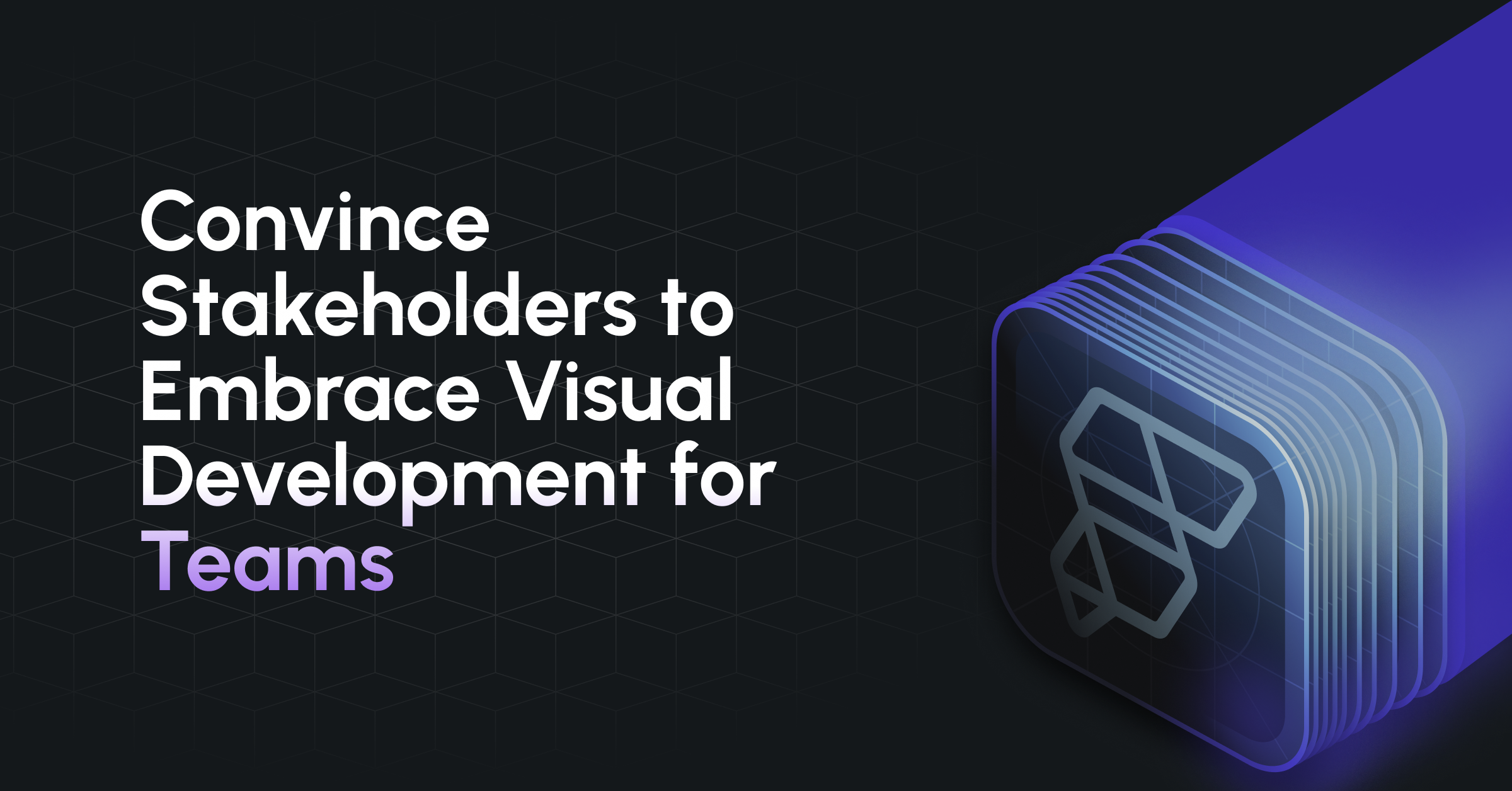Visual development is transforming how teams build software by enabling faster iteration, reducing bottlenecks, and fostering collaboration between designers, engineers, and product managers. But despite its advantages, convincing stakeholders to adopt visual development tools can be challenging, especially when dealing with risk-averse decision-makers. This guide will help you effectively make your case, address concerns, and build buy-in for integrating visual development into your team’s workflow.
Understanding the Stakeholder Perspective
Before making your pitch, it’s essential to understand your stakeholders’ priorities and pain points. Depending on their role, they may view visual development tools through different lenses:
- Engineering Leaders: Likely focused on maintainability, scalability, and how visual development integrates with the existing tech stack. They may be wary of introducing tools that seem to bypass traditional development processes.
- Product Managers: Interested in how visual development accelerates time-to-market and improves cross-functional collaboration. They’ll want to know how it impacts the team’s ability to deliver on business goals.
- Designers: Often eager for tools that streamline the design-to-development handoff, but they’ll want assurance that visual development doesn’t compromise their creative flexibility.
- C-Suite Executives: Focused on cost savings, innovation, and ROI. They’ll need a clear understanding of how visual development supports strategic objectives.
Tailor your approach to address these different perspectives, and you’ll lay the groundwork for a productive conversation.
Making the Business Case for Visual Development
To secure stakeholder buy-in, connect visual development to measurable business outcomes. Highlight these key benefits:
- Speed to Market: Visual development platforms like FlutterFlow allow teams to rapidly prototype, iterate, and deploy applications, reducing development timelines by up to 70%.
- Resource Optimization: With pre-built components, reusable libraries, and no-code/low-code capabilities, visual development reduces the need for extensive front-end engineering resources.
- Enhanced Collaboration: By providing a shared workspace for designers, developers, and product managers, visual development tools improve alignment and reduce miscommunication.
- Scalability: Platforms like FlutterFlow integrate seamlessly with enterprise tech stacks, APIs, and CI/CD pipelines, ensuring scalability and long-term maintainability.
Addressing Common Concerns and Objections
Even with a strong business case, you’re likely to encounter objections. Prepare to address these concerns head-on:
Concern: “Visual development tools aren’t robust enough for enterprise-grade applications.”
Response: Share examples of enterprise organizations using tools like FlutterFlow to build secure, scalable applications. Highlight features like custom code integration, API support, and deployment flexibility.
Concern: “This will lead to technical debt.”
Response: Explain how visual development platforms support clean, modular code practices. Emphasize the ability to export code for review, customization, and integration with existing workflows.
Concern: “Our developers won’t adopt this.”
Response: Showcase how visual development simplifies repetitive tasks, allowing engineers to focus on more complex, high-value work. Offer training programs to ensure developers feel empowered and supported.
Concern: “It’s expensive.”
Response: Compare the upfront cost of the platform to the savings in development time and resource allocation. Provide projections of the ROI based on reduced development cycles and increased productivity.
Demonstrating ROI and Real-World Examples
Nothing builds confidence like real-world success stories. Share case studies or testimonials from similar organizations that have adopted visual development platforms. Highlight:
- Key outcomes: For example, “Company X reduced their app development timeline by 60% using FlutterFlow, enabling them to launch three new customer-facing apps in one year.”
- Metrics: Focus on time saved, costs reduced, and user satisfaction improvements.
- Scalability: Show how teams have successfully scaled their applications without sacrificing performance or quality.
Building a Pilot Program to Showcase Impact
To mitigate perceived risks, propose a pilot program as a low-commitment way to evaluate the benefits of visual development. Your pilot should:
- Identify a Clear Use Case: Choose a project that’s small in scope but impactful enough to demonstrate the value of visual development.
- Set Measurable Goals: Define success metrics, such as time-to-market, resource utilization, and user satisfaction.
- Gather Cross-Functional Feedback: Involve designers, engineers, and PMs in the pilot to ensure alignment and gather diverse perspectives.
- Evaluate and Report Results: Share insights and metrics from the pilot program with stakeholders to reinforce your case for broader adoption.
Crafting Your Visual Development Adoption Plan
Once stakeholders are on board, create a detailed adoption plan to ensure a smooth rollout:
- Training and Onboarding: Provide workshops and documentation to help team members get up to speed with the platform.
- Integration with Existing Workflows: Work with engineering leaders to ensure the platform integrates seamlessly with your tech stack, CI/CD pipelines, and version control systems.
- Feedback Loops: Establish regular check-ins to gather feedback and make iterative improvements.
- Scaling Usage: Start with one or two teams and gradually expand adoption across the organization.
By addressing stakeholder concerns, demonstrating clear ROI, and implementing a thoughtful rollout plan, you can make a compelling case for adopting visual development tools like FlutterFlow. With the right approach, you’ll empower your team to build better software, faster, and position your organization for long-term success in a competitive digital landscape.
Ready to start building? Try FlutterFlow today and create powerful, high-performance apps with full control and flexibility.

